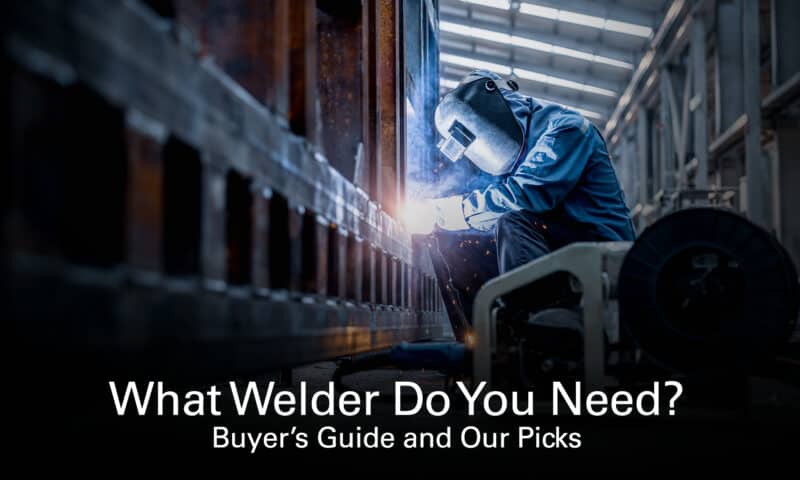Buying a welder is a key decision for any DIYer. Depending on your needs, you could be looking at investing a couple hundred dollars … up to a few thousand. And there are thousands of choices out there. Plenty of questions to sort through, too.
Fortunately, we’re here to help. Read on as we break down some of the important issues and offer our top picks for choosing a welder for your home shop.
What Types of Welder Do You Need?
Most welders fall into four main categories:
- MIG, also called gas metal arc welding (GMAW)
- Flux-core arc welding (FCAW)
- TIG, or gas tungsten arc welding (GTAW)
- Stick, or shielded metal arc welding (SMAW)
You can also find welders that enable more than one of these processes. Now let’s take a closer look at each type.
MIG Welding (GMAW)
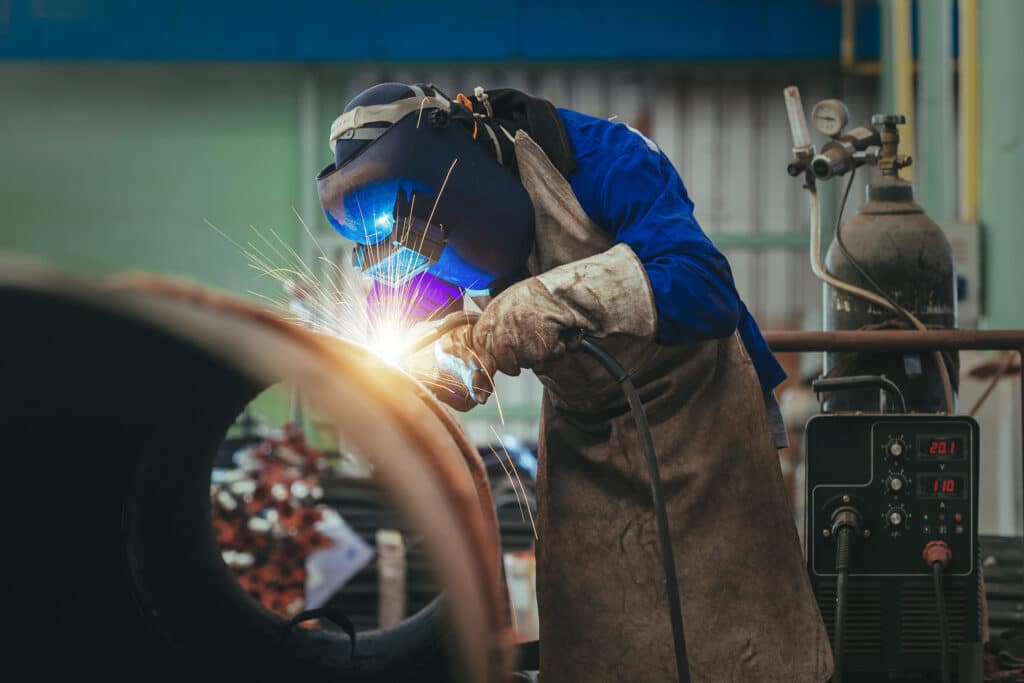
Metal inert gas (MIG) welding is a fast, relatively straightforward process for easily making clean, strong welds with little skill required. No wonder it’s very common in manufacturing environments.
A MIG welder feeds filler metal at a consistent speed. Electricity melts and fuses the wire and the weld joint. To protect the weld, it uses a shielding gas of argon or helium.
MIG is good for medium-thickness materials, including steel, stainless steel, and aluminum. But it’s not so good for specialty metals such as copper, brass, or titanium, and it struggles on thick pieces of metal.
Flux Core Welding (FCAW)
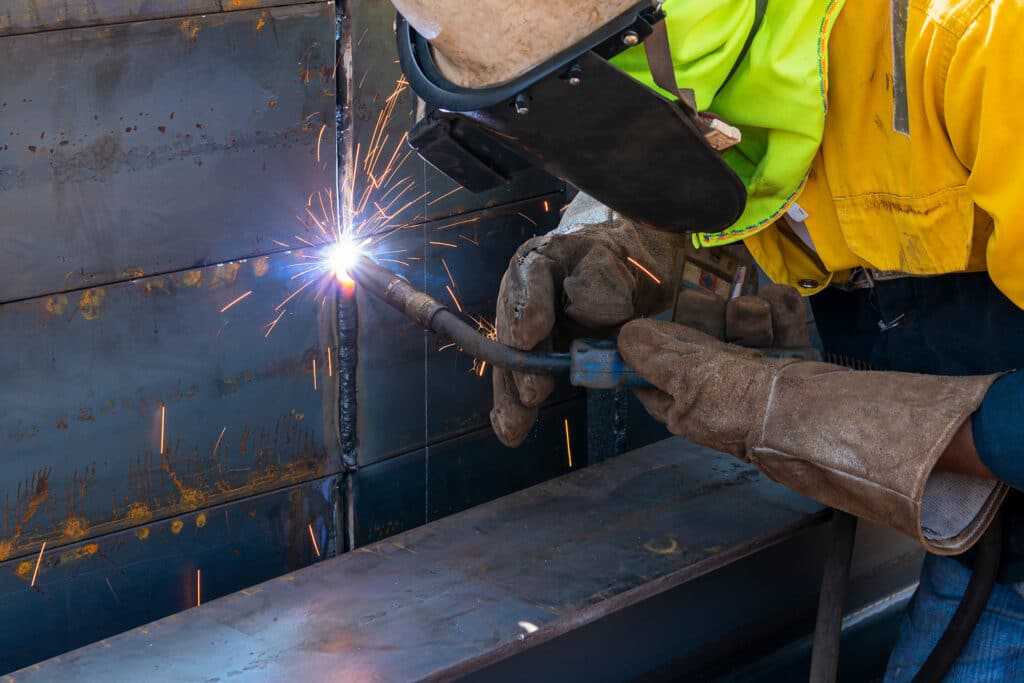
Versatile flux-core arc welding is handy for repair work, on-site fabrication, or outdoor welding in the wind.
It’s essentially the same concept as stick welding but fed through a MIG machine. The machine feeds an electrode filled with flux to create it’s own shielding gas, which protects the arc (hence the outdoor compatibility).
Flux core welding combines the strengths and weaknesses of the foundational welding processes upon which it is built. Because of this, FCAW tends to cause spatter like SMAW, so there’s some cleanup involved. but these machines also only work with thinner metals, like GMAW.
Otherwise, flux core is quite versatile for hobbyists. It works with carbon and stainless steels, as well as cast iron. And it’s suitable for any basic welding position.
TIG Welding (GTAW)
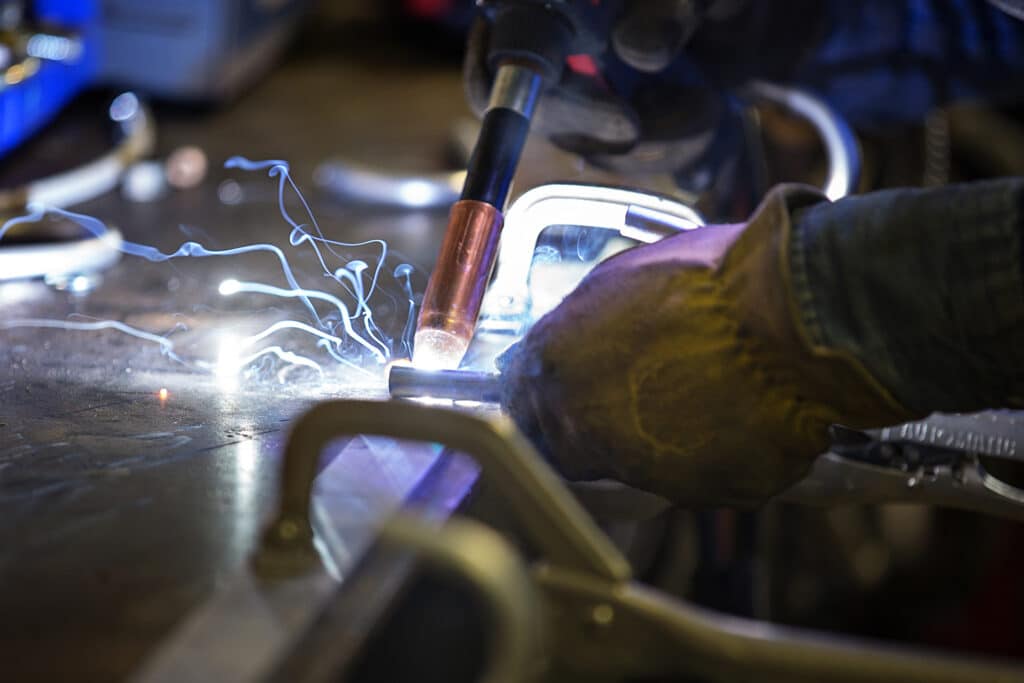
Tungsten inert gas (TIG) welding is your best bet for great-looking welds. If you know what you’re doing, that is.
Gas tungsten arc welding, also called TIG (or tungsten inert gas) welding, enables high-precision, aesthetic welds.
In TIG, also called gas tungsten arc welding (GTAW), the machine shoots current through a consumable tungsten electrode. Typically, you activate it with a foot pedal, allowing a higher degree of precision. Meanwhile, it’s a two-hand operation: the filler rod in one hand and the torch in the other.
TIG works well with medium-thickness workpieces of stainless steel, magnesium, copper, and other exotic metals.
Because of the steep learning curve, this isn’t the type of welding a hobbyist will likely pick up first, but due to the aesthetics of the welds and the ability to weld on exotic metals, it is the most in-demand type of welding.
Stick Welding (SMAW)
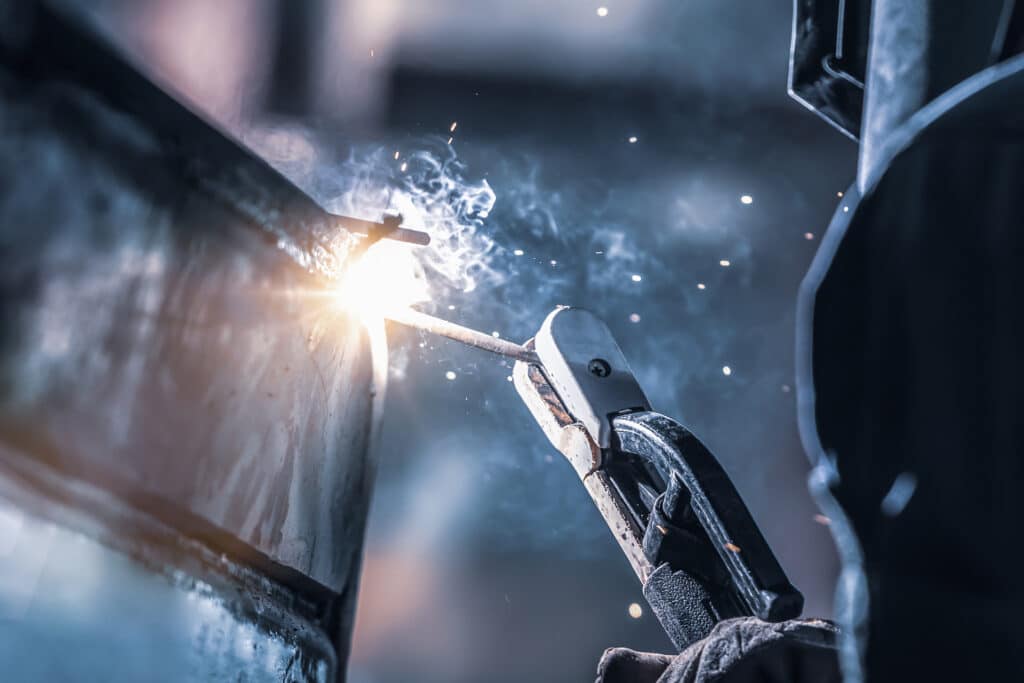
Simple and accessible, shielded metal arc welding (SMAW)—often just called stick welding—is a great beginner process.
People with little experience can do solid work, even on rusty materials. That’s why stick welding is popular for everyday maintenance and basic metal handiwork.
The process involves current flowing through an electrode rod to the parent material.
Stick welding is best suited for thicker materials (18 gauge or larger). It creates a lot of spatter and heavy smoke. So you should work outdoors or in a well-ventilated area.
What Type of Metal Will You Be Welding?
As we’ve hinted at above, different types of welders work better with different types of metals. And some are better than others at welding different types of metal.
Here’s a handy chart to visualize which type works well with which metals. Note that we’ve grouped stick and flux core together. After all, they’re fundamentally the same type of welding (just a different delivery method).
| Metal | Weld Process | ||
| MIG | Stick/Flux | TIG | |
| Steel | X | X | X |
| Stainless Steel | X | X | X |
| Aluminum Alloys | X | X | |
| Cast Iron | X | ||
| Chromoly | X | ||
| Copper | X | ||
| Copper | X | ||
| Brass | X | ||
| Exotic Metals (Magnesium, Titanium, etc.) | X | ||
How Thick Is the Metal You’ll Be Welding?
We’ve said that MIG and stick welders are better for thicker metals. But there’s another important factor: amperage.
The thicker your metal, the more amps your welder needs to weld it. See the table below for a general guideline.
| Amps on Machine | Max. Metal Thickness |
| 140 amps | 1/4 inch |
| 180 amps | 5/16 inch – 3/8 inch |
| 200 amps | 3/8 inch – 7/16 inch |
| 250 amps | 1/2 inch |
So, Which Welder Should You Buy?
Maybe you now know the type of welder and the amps you need. But you’ve still got loads of choices. To help you sort through them, here are our top recommendations for welders in several categories.
Best MIG Welder for Home Use: Hobart Handler 140
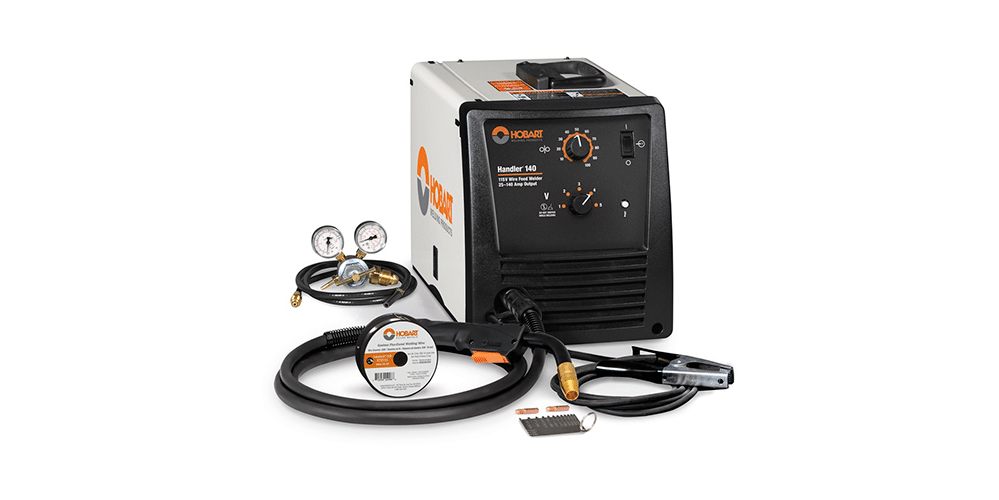
Easy to set up and use anywhere you need it, the Hobart Handler 140 is a smart choice for MIG welding at home.
With 140 amps, you can weld a wide range of materials (including aluminum and stainless steel) up to about a quarter inch thick. At $1,000+, it’s not the cheapest welder on this list. But you can get a lot of value out of its versatility.
Best Flux Welder: Lincoln WELD-PAK 90i
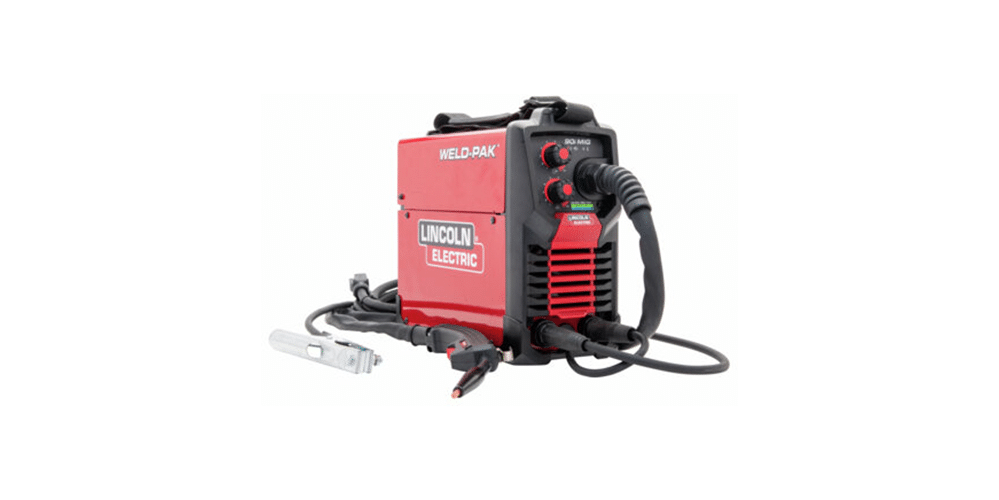
Affordability and simplicity come together in a great machine for DIY welders.
This convenient, portable welder is ideal for welding mild steels up to about 1/4 inch thick—just the kind of jobs you might do around the home. A lightweight design and innovative safety features add to the at-home advantages.
Best TIG Welder: Primeweld TIG 325X
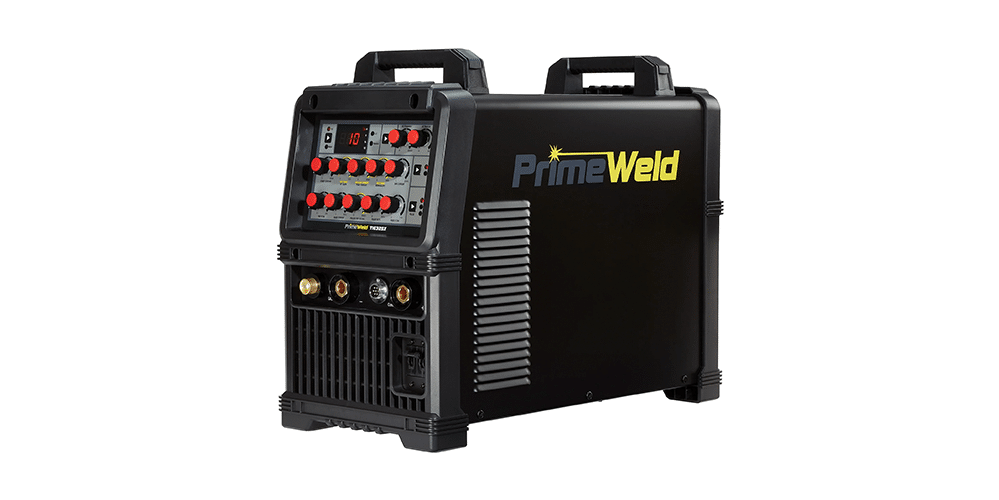
This excellent AC/DC TIG welder works great with almost any metal—aluminum, carbon steel, stainless steel, cast iron, and more.
Primeweld fans rave about the ease of use, smooth and quick startup, and stability of this versatile TIG/all-around welding machine.
Best Stick Welder: ESAB Rebel EMP 215ic
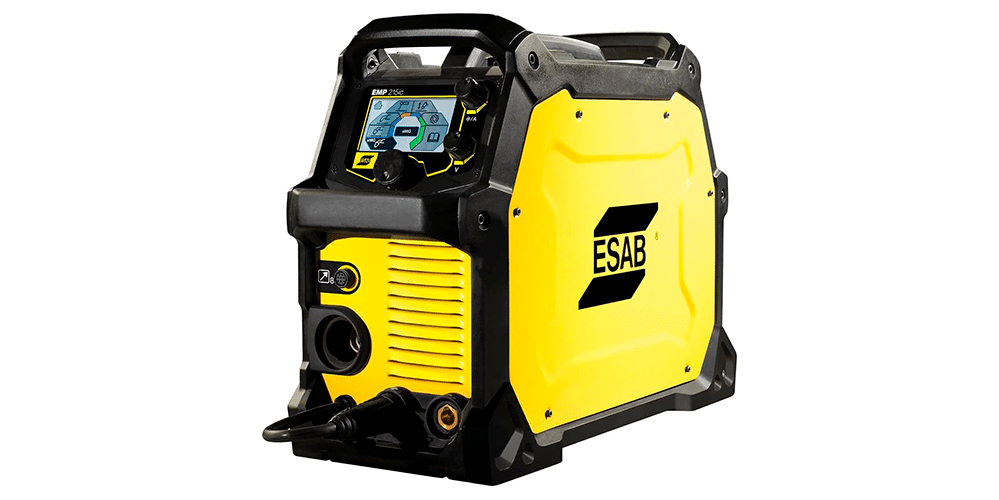
Rugged construction, a simple interface with a great display, and exceptional portability make the ESAB Rebel a go-to for both beginner and expert DIY welders.
With a MIG gun and TIG torch included, it can do a lot more than stick welding. (Although there’s no foot pedal included for flux.) Plus, the automatic settings feature is particularly handy for setup.
Best Cheap Welder: TITANIUM Easy-Flux 125 Amp Welder
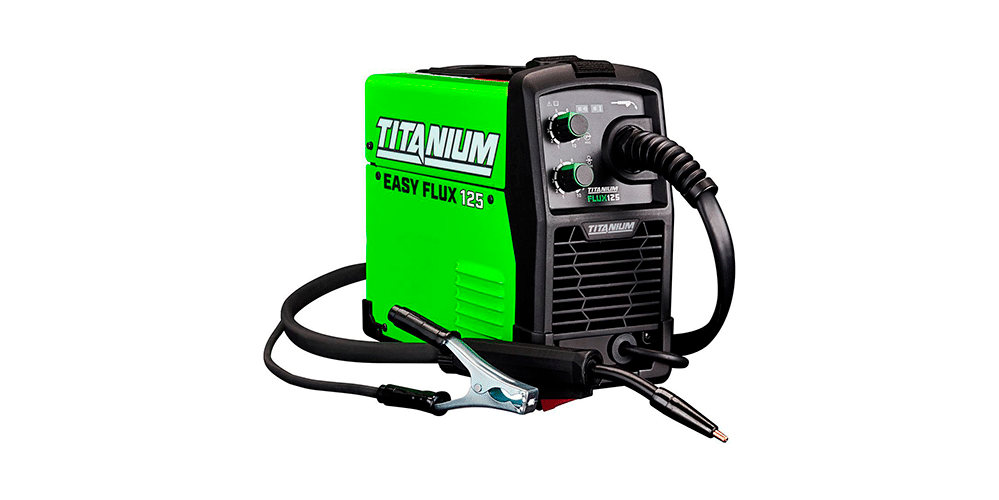
It may not have a lot of power, but the TITANIUM packs a lot of value for the money.
It’s also renowned as a reliable, easy machine for beginners. And of course, there’s a reason we’re listing in the cheap category. You can often find this excellent machine for $150 or less!
Best Compact Welder: Lincoln WELD-PAK 90i

Is it cheating to cite the WELD-PAK 90i twice on our list? Not when it fits the flux and compact categories so well for the home hobbyist.
It’s fast, convenient, and easy to use. Plus, it offers a nice shoulder strap for easy transport.
Best Premium Welder: Miller Multimatic 255
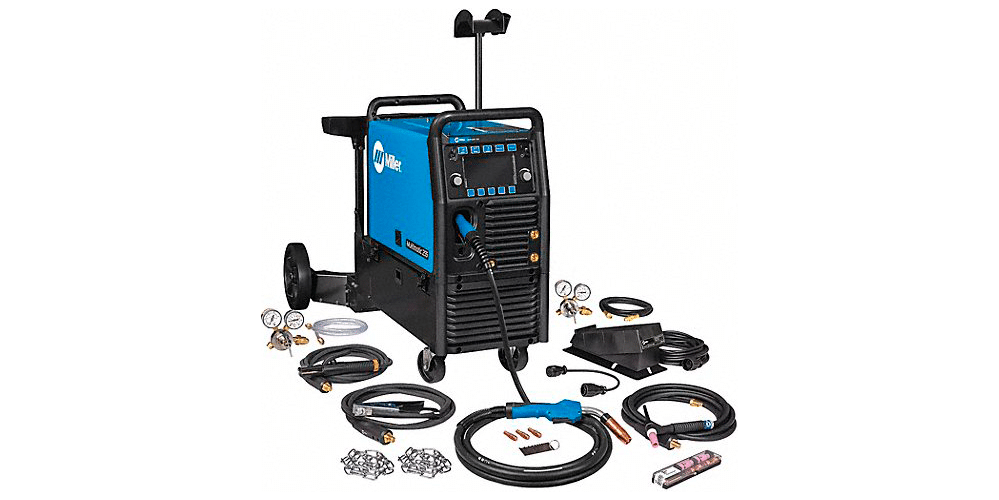
Lincoln may get a double-mention, but another big name in welders gets to close out our list.
And yes, at around $5,000 new, this awesome all-around welder commands a premium price. But if you’re doing a lot of welding of a lot of different materials, it can be more than worth it. MIG, flux-cored, TIG, and stick welding are all on the table. Built for pros, but still (relatively) easy to use, the Multimatic is hard to beat for the hardworking DIY enthusiast.
But Whatever Welder You Choose …
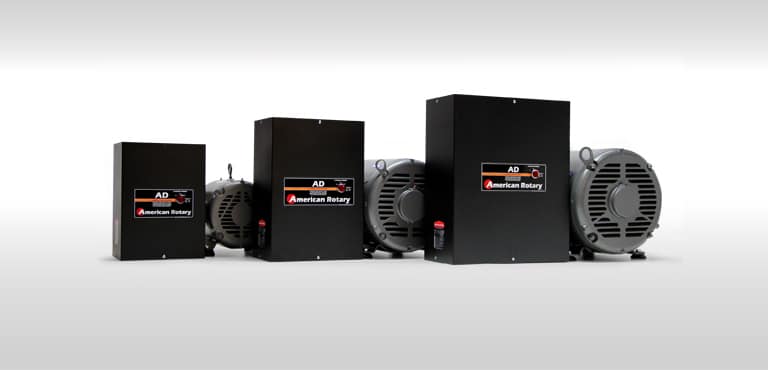
Be sure to consider your power source.
If you’re looking to do more welding and work with thicker materials, you’ll want higher amperage. The higher the amps, the more you might want a three-phase machine. That will provide greater efficiency and power for your heavy-duty work.
So, can you power a three-phase welder with your typical single-phase electric service? Yes! All you need is a quality rotary phase converter. It’ll convert your electricity into the strong, smooth 3-phase you need to produce good, clean welds.
Case in point: USA-made American Rotary AD Digital Smart Series converters are specifically suited for voltage-sensitive equipment such as welders. Here’s more about using phase converters for welding.



